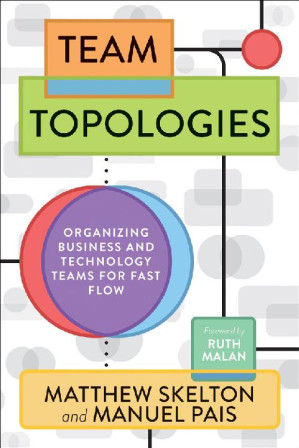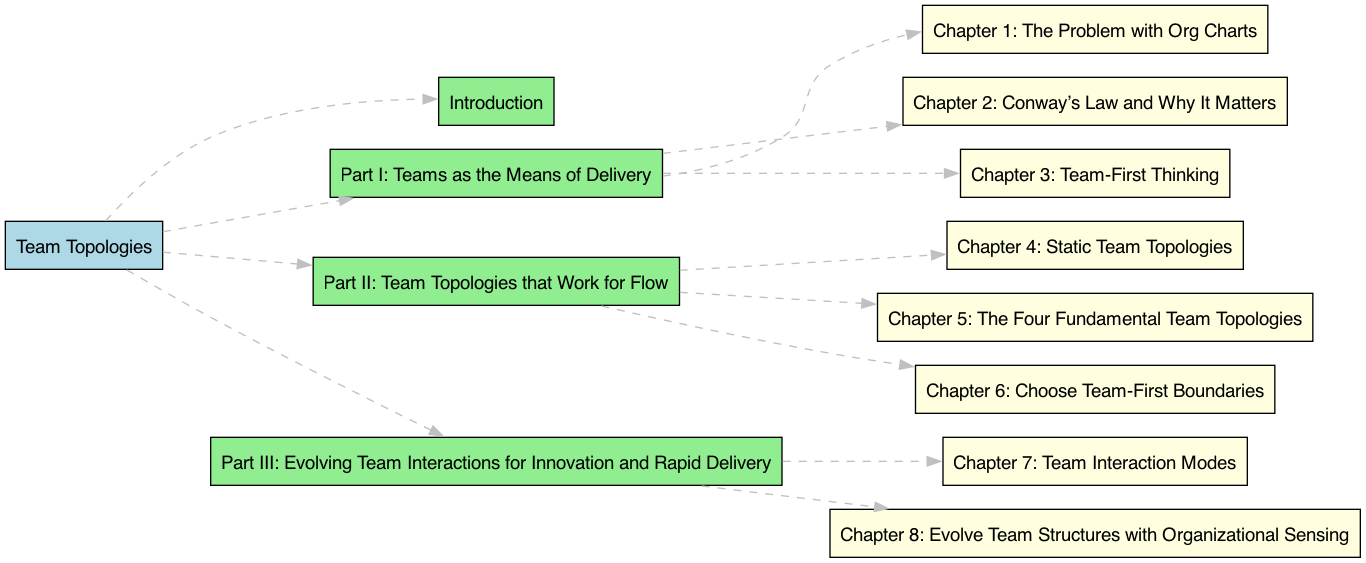Insights from Team Topologies: Organizing Business and Technology Teams for Fast Flow
"Team Topologies: Organising Business and Technology Teams for Fast Flow" by Matthew Skelton and Manuel Pais offers a novel approach to structuring technology teams to achieve high performance and rapid delivery. The authors present practical frameworks and insights to help organisations navigate the complexities of modern software development by optimising team interactions and responsibilities.

Team Topologies: Organizing Business and Technology Teams for Fast
Summary

Part I: Teams as the Means of Delivery
Chapter 1: The Problem with Org Charts
The authors critique traditional organisational charts, arguing that they often fail to reflect the real communication patterns within a company. They propose that organisations be viewed as complex, adaptive systems where effective team structures are crucial for innovation and delivery speed. The chapter introduces the concept of Team Topologies as a way to rethink team structures, focusing on clear responsibilities and effective interactions.
Chapter 2: Conway’s Law and Why It Matters
Conway’s Law suggests that the design of a system will mimic the communication structures of the organisation that creates it. The authors discuss the importance of aligning team structures with desired software architectures to improve efficiency and flow. They introduce the "reverse Conway maneuver," where organisations shape their teams to produce optimal software architecture.
Chapter 3: Team-First Thinking
The chapter emphasizes the importance of prioritising teams over individuals in software delivery. The authors discuss limiting team size to maintain effective communication and trust, aligning team responsibilities with cognitive load limits, and designing team environments to support success.
Part II: Team Topologies that Work for Flow
Chapter 4: Static Team Topologies
This chapter identifies common anti-patterns in team structures and proposes static team topologies that facilitate flow. The authors explore various successful team patterns, such as stream-aligned teams, and provide guidance on choosing the right topology for different organisational contexts.
Chapter 5: The Four Fundamental Team Topologies
The authors introduce four fundamental team topologies: stream-aligned, enabling, complicated-subsystem, and platform teams. They explain the roles and interactions of each type, stressing the importance of avoiding silos and ensuring that platforms are "just big enough."
Chapter 6: Choose Team-First Boundaries
The chapter discusses how to set boundaries that align with team cognitive loads and responsibilities. The authors highlight the concept of "fracture planes," which help determine logical places to split software systems in ways that support team structures.
Part III: Evolving Team Interactions for Innovation and Rapid Delivery
Chapter 7: Team Interaction Modes
The authors outline three essential team interaction modes: collaboration, X-as-a-Service, and facilitating. These modes help manage dependencies and ensure that teams can work effectively together. The chapter provides practical examples of how to choose and implement these interaction modes to reduce uncertainty and enhance flow.
Chapter 8: Evolve Team Structures with Organisational Sensing
The final chapter focuses on the continuous evolution of team structures. The authors introduce the concept of organisational sensing, which involves regularly assessing and adapting team topologies to respond to changing conditions. They provide strategies for fostering a culture of continuous learning and improvement.
Key Takeaways
- Align Teams with Software Architecture: Use Conway’s Law to design team structures that naturally produce the desired software architecture.
- Four Fundamental Team Types: Stream-aligned, enabling, complicated-subsystem, and platform teams are essential for optimising flow.
- Team Interaction Modes: Collaboration, X-as-a-Service, and facilitating modes help manage dependencies and interactions.
- Cognitive Load Management: Design team responsibilities and boundaries to align with cognitive load limits.
- Continuous Evolution: Regularly assess and adapt team structures to maintain effectiveness and responsiveness.
Personal Reflections
Reading "Team Topologies" has transformed my understanding of effective team structures in software development. The authors’ emphasis on aligning team design with software architecture and managing cognitive load offers practical strategies for improving efficiency and innovation. The book’s actionable insights make it a valuable resource for anyone involved in organisational design and software delivery.
Conclusion
"Team Topologies: Organizing Business and Technology Teams for Fast Flow" by Matthew Skelton and Manuel Pais is an essential guide for technology leaders seeking to optimise team structures and interactions. By adopting the principles outlined in this book, organisations can achieve faster delivery, better alignment with business goals, and a more adaptable and resilient team environment. This book provides a clear, actionable framework for designing and evolving teams to meet the challenges of modern software development.